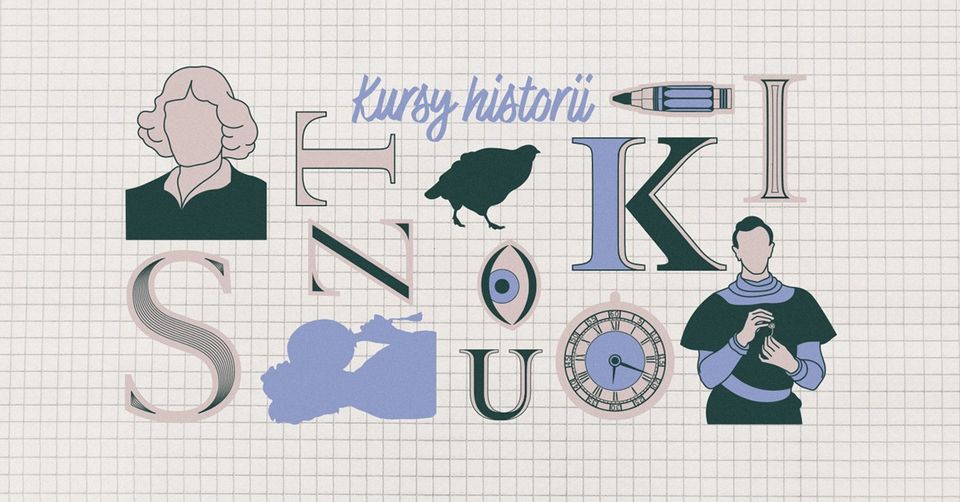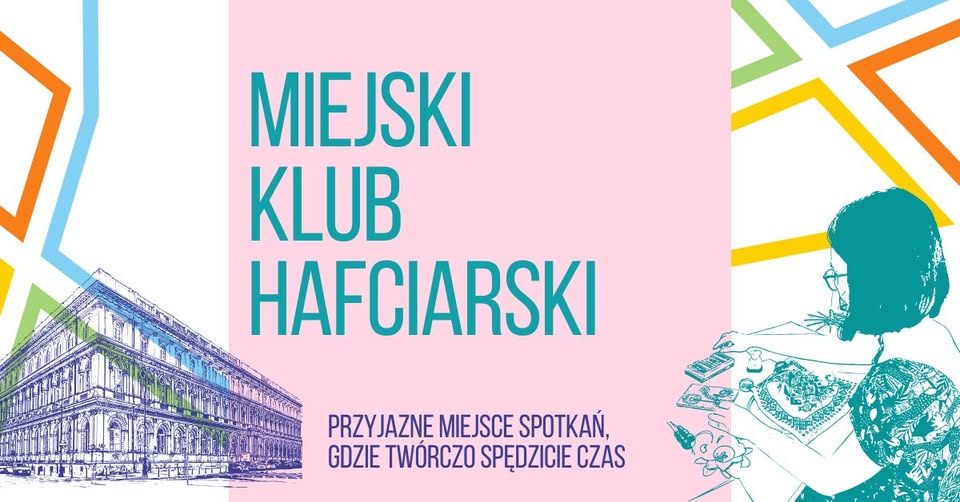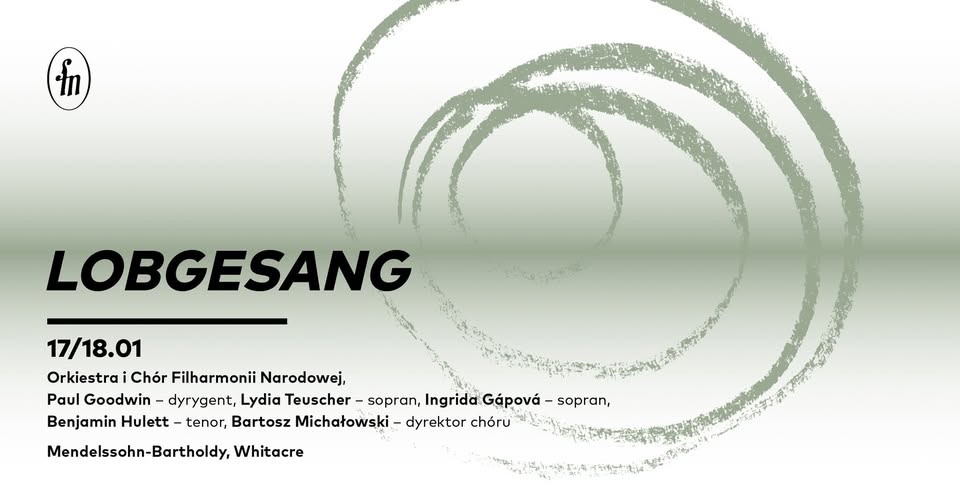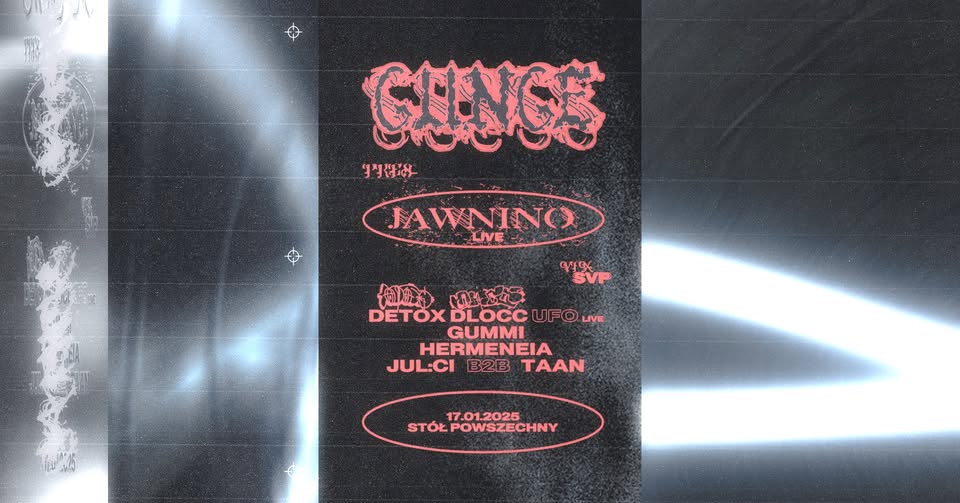
Are you just starting your adventure with art? Are you passionate about painting and architecture, but feel the need to systematize your knowledge? Or maybe you are thinking about taking art history for your high school diploma? In any case, our art history course will be the right choice. During 45 lectures, you will learn about all the most important trends that have shaped the face of architecture, sculpture, painting, and applied arts over the course of several millennia.
In the upcoming year, we have decided to slightly change the format of our course. It will consist of three semesters, allowing for a more detailed discussion of the most significant phenomena. The first part will thematically conclude with Renaissance art, the second with the end of the 19th century, and the third will be dedicated to the art of the 20th and 21st centuries.
📆 Date: Tuesdays, 6:00 PM
🕰️ Duration: 80 minutes (including time for answers to selected participants' questions)
📌 Location: online event, ClickMeeting platform
📓 Participation rules: named pass for one semester at the price of 150 PLN or one-time lecture tickets at the price of 15 PLN available online from 10:00 AM on the day of the lecture.
🎟️ Sale of passes for the 3rd semester of the course will begin on September 11 at 10:00 AM. Purchases can be made online.
ℹ️ Additional information:
• both passes and tickets can only be purchased online;
• pass holders receive a link to the lecture three times: a week in advance (except for the first lecture), on the day of the event, and 30 minutes before the lecture starts;
• individuals who purchased a ticket for a single lecture receive a link at the time of purchase (the link must be copied from the PDF ticket sent to the specified address at the time of purchase);
• in case of questions, please refer to the FAQ section on the website; if there is no information on the site, please contact us via email: kursy@mnw.art.pl, and include the course name in the subject line;
• please familiarize yourself with the Regulations.
🔗 [www.artdone.pl](http://www.artdone.pl)
SCHEDULE
👉🏻 October 1, 2024
Art around 1900: trends, styles, personalities / Karolina Zalewska
The turn of the 19th and 20th centuries is a period rich in diverse artistic phenomena in Polish lands. Epigones of academism and mature creators of realism are still active. Wyczółkowski, Podkowiński, and Pankiewicz grapple with the already outdated impressionism in Paris. Ultimately, however, Young Poland triumphs, which transforms the concepts of symbolism, secession, and expressionism through all cases and personalities.
👉🏻 October 8, 2024
Art of the first half of the 20th century, part 1 / Magdalena Kucza-Kuczyńska
The lecture includes an introduction to modern art and the characteristics of its various directions, such as fauvism, expressionism, cubism, and futurism. In addition to discussing the most important artistic means, we will look at what connected and what divided the various movements and their creators. We will consider why futurism emerged in Italy, while expressionism arose in Germany, and what cubism really is. This will also be an opportunity to closely examine the works of the most prominent creators of this period, such as Henri Matisse, Pablo Picasso, Umberto Boccioni, and Oskar Kokoschka.
👉🏻 October 15, 2024
Art of the first half of the 20th century, part 2 / Magdalena Kucza-Kuczyńska
The lecture will be dedicated to the analysis of selected directions of modern art and the work of artists such as Wassily Kandinsky, Piet Mondrian, Marcel Duchamp, Kazimir Malevich, Salvador Dalí, and René Magritte. Looking at the works of leading representatives of this period, we will consider why abstraction had to emerge, what the Black Square on a white background was and how it looks today, as well as how constructivism differs from neoplasticism and what connection dadaism has with surrealism.
👉🏻 October 22, 2024
Polish art of the first half of the 20th century / Przemysław Głowacki
In the lecture, we will focus on the interwar period, which was particularly important for the development of Polish art. After regaining independence, various artistic trends came to the fore, and there was a discussion about what forms art should take in the reborn state. We will learn about the most important groups and personalities of this time, from avant-garde environments to more conservative directions that strongly refer to tradition.
👉🏻 November 5, 2024
Architecture of the first half of the 20th century / Piotr Kibort
The first half of the 20th century in architecture is characterized by lively searches linking aesthetics with technology. Architecture becomes – following the previous century – increasingly diverse typologically. Architects seek a satisfying synthesis of form and function, while avant-garde movements develop alongside conservative ones. In the lecture, we will learn about the most interesting attempts to solve the problems faced by architects.
👉🏻 November 12, 2024
Art of the second half of the 20th century, part 1 / Emilia Maryniak
Since the late 1940s, the center of artistic activities has shifted from Paris to New York. This change will not only influence the development of abstract expressionism (which will also appear in Europe as informel), but will primarily introduce a new perspective on the boundary between high art and mass culture. The most important expression of this will be pop art, which refers to the language of advertising and is focused on the object of consumerism. At the same time, artists will continue to explore issues of geometric art, especially through an interest in optical play in pop art and figurative art, which attempts to reinterpret and understand humanity anew. However, it is minimal art, with its formalist and simple expression, that will most strongly influence subsequent artistic phenomena.
👉🏻 November 19, 2024
Art of the second half of the 20th century, part 2 / Emilia Maryniak
The most revolutionary and transformative phenomenon of the second half of the 20th century will be the popularization of the artistic installation by minimal art and the emergence of conceptual art, which will be based not on the work as an object, but on the work as a process. The transmission of ideas and thoughts will constitute the essence of this art, which is associated with stepping into everyday space and the development of happenings. Both the land art that was developing at that time and experiments with one's own body (body art) will permanently transform the field of visual arts and introduce a new language, without which we would not have the tools today to understand contemporary art.
👉🏻 November 26, 2024
Polish art after 1945 / Przemysław Głowacki
Art in Poland after World War II could only continue its development without obstacles for a short period. The doctrine of socialist realism was quickly introduced, and the political situation and imposed communism largely determined artistic life later on. The lecture will provide a synthesis of the most important trends that emerged in the art of Polish artists up to 1989.
👉🏻 December 3, 2024
Architecture of the second half of the 20th century / Piotr Kibort
Architecture in the second half of the 20th century is characterized by the popularization of modern solutions and the international style. With the triumph of the USSR, many countries in Central and Eastern Europe went through a socialist realist episode in the middle of the century. In later decades, proposals for brutalist, biomimetic, and high-tech architecture emerged, while formal modernity was challenged by searches in the tradition and postmodernism. By the end of the century, there was an interest in modernism as a classic coexisting with new ways of thinking about architecture.
👉🏻 December 10, 2024
Towards space – on sculpture and new media in contemporary art / Rita Twardziak
During the lecture, we will look at the works of the most recognizable sculptors of the 20th and 21st centuries, including Alexander Calder, Henry Moore, and Constantin Brâncuși. Together, we will trace how the understanding of the concept of sculpture has changed and what new media are associated with spatial art in contemporary times. We will also consider the functions performed by sculpture, the tasks set before it, the directions with which it can be associated, and we will also ask about its future.
👉🏻 December 17, 2024
Negatives and pixels. The most important phenomena in the history of photography of the 20th and 21st centuries / Dr. Weronika Kobylińska
The lecture will be dedicated to key currents and phenomena that have shaped photographic visual culture over the last 200 years. What characterized pictorialism and new objectivity, and above all – do some of these aesthetic assumptions still function in photography today? What is the difference between reportage photography and street photography, and why has the recording of fleeting moments found its place in the canon of art? We will also consider what impact conceptualism had on photography. The lecture will be illustrated with works by leading photographers of the era, such as Diane Arbus, Henri Cartier-Bresson, Man Ray, Cindy Sherman, and Alfred Stieglitz. We will briefly introduce the experimental formal means used by artists, taking into account their methods of working in the darkroom. The meeting will conclude with a short reflection on post-photography in the age of digital technology dominance.
👉🏻 January 7, 2025
The era of design, or how design changed in the 20th century? / Katarzyna Andrzejczyk-Briks
The lecture will tell the story of how design became an autonomous field and how it changed throughout the 20th century, from 'applied art to industry,' through the birth of industrial design, to design contesting the past at the end of the 20th century. The history of design will be presented in the context of economic, political, social, and cultural changes, based on selected examples and actions of its creators.
👉🏻 January 14, 2025
The beginnings of video history / Dr. Marika Kuźmicz
The emergence of digital images produced by portable video cameras revolutionized art in the mid-1960s. Today, we do not fully realize the significance of this event, although almost everyone uses the phenomenon of sound and image transmission, using our smartphones or laptops. However, at that time, it was a revolution. The lecture will present selected threads of the beginnings of video history in Europe and the United States, with particular emphasis on the role of female artists.
👉🏻 January 21, 2025
Art after 1989 / Emilia Maryniak
The art of the 1990s is both a time of continuation of postmodern reflections on the fluidity of meanings and the impossibility of knowing, as well as a time of artistic attitudes engaging with political and social issues. It is an open expression of opinions and the tackling of difficult topics in a difficult way by art. Although the political situation in Poland after 1989 did not immediately allow for entry into this international trend, voices commenting on the new reality quickly emerged. The most important phenomenon became the searches of artists associated with critical art, as well as later initiatives of street art and performance creators. The question of the role and purpose of artistic actions remained open, maintaining a division between the individualistic, internal world of the artist's reflections and their role as an engaged activist.
👉🏻 January 28, 2025
Contemporary art / Marcin Matuszewski
Frequent comments on exhibitions of currently emerging art include: my child could have painted that! Is this still art? During the lecture, we will learn about selected works and artistic actions from recent years and try to deal with unfair common opinions about contemporary art. We will consider where they come from and why they are so popular? We will look at site-specific actions – how they can comment on the space they are in, how they relate to the past, and reinterpret it. We will not miss the most important names and works that have revolutionized the discussion about art in recent years.
👤 LECTURERS
Karolina Zalewska – art historian, educator at MNW, runs a company specializing in archival queries and documentation of monuments for conservation work, architectural projects, and museum needs.
Magdalena Kucza-Kuczyńska – art historian, educator at MNW, lecturer at the Warsaw Academy of Fine Arts and the Higher School of Arts, author of texts in the field of art anthropology and art therapy.
Przemysław Głowacki – art historian and museum educator who has been popularizing knowledge about art for years. He worked for many years at the National Museum in Warsaw, where he served as deputy head of the Education Department. He is a teacher and academic lecturer, conducting a series of lectures at the Royal Castle in Warsaw and his own website dedicated to art and exhibitions [www.artdone.pl](http://www.artdone.pl).
Piotr Kibort – art historian, graduate of the University of Warsaw. He works at the National Museum in Warsaw as a curator in the Cabinet of Prints and Drawings, where he oversees a collection of architectural drawings created from the 18th to the 20th century.
Emilia Maryniak – visual artist and art historian, graduate of Chelsea College of Arts in London and the Institute of Art History at the University of Warsaw. She is interested in contemporary methodology of art history and the influences of science and philosophy on 20th and 21st-century art.
Rita Twardziak – art historian, teacher, PhD student at UW, associated for many years as an educator with the National Museum in Warsaw. She studies medieval art and is fascinated by contemporary art.
Dr. Weronika Kobylińska – art historian, assistant professor at the National Film, Television and Theatre School in Łódź (PWSFTviT) and president of the Archaeology of Photography Foundation. She taught at the Institute of Art History at UW (2019–2021), where she was the head of part-time studies. A scholarship holder of, among others, the Foundation for Polish Science and the Ministry of Culture and National Heritage. Coordinator of the Polish branch of the international research network Ars Graphica.
Katarzyna Andrzejczyk-Briks – art historian, curator, and lecturer in art history and design at the School of Form, SWPS University in Warsaw, Collegium da Vinci in Poznań, and WSB Merito in Szczecin. An expert analyzing trends and signals of change. She collaborates with the consulting team of Concordia Design in Poznań. She uses her knowledge of changes in her work with designers and companies to create new products, services, and experiences that respond to the changing needs and values of users. A trainer and co-creator of the Accessible Design program promoting knowledge about universal design and accessibility.
Dr. Marika Kuźmicz – art historian. Founder of the Arton Foundation (2011), a non-profit organization dedicated to studying the art of the 60s and 70s. She particularly researches new media art. Dean of the Faculty of Artistic Research and Curatorial Studies at the Academy of Fine Arts in Warsaw. Chief researcher at the Susch Museum founded by Grażyna Kulczyk, where she studies the art of female artists from Central and Eastern Europe, and curator at this institution.
Marcin Matuszewski – educator, employee of the education department at MNW, specialist in accessibility for people with special needs. For many years, he has closely collaborated with the education departments of Zachęta – National Gallery of Art and the Museum of Modern Art in Warsaw. An advocate of mindfulness in experiencing both culture and nature, a proponent of multi-sensory perception of the world, a city guide in Warsaw, and a gardener.
Coordination: Zuzanna Szor / Education Department


